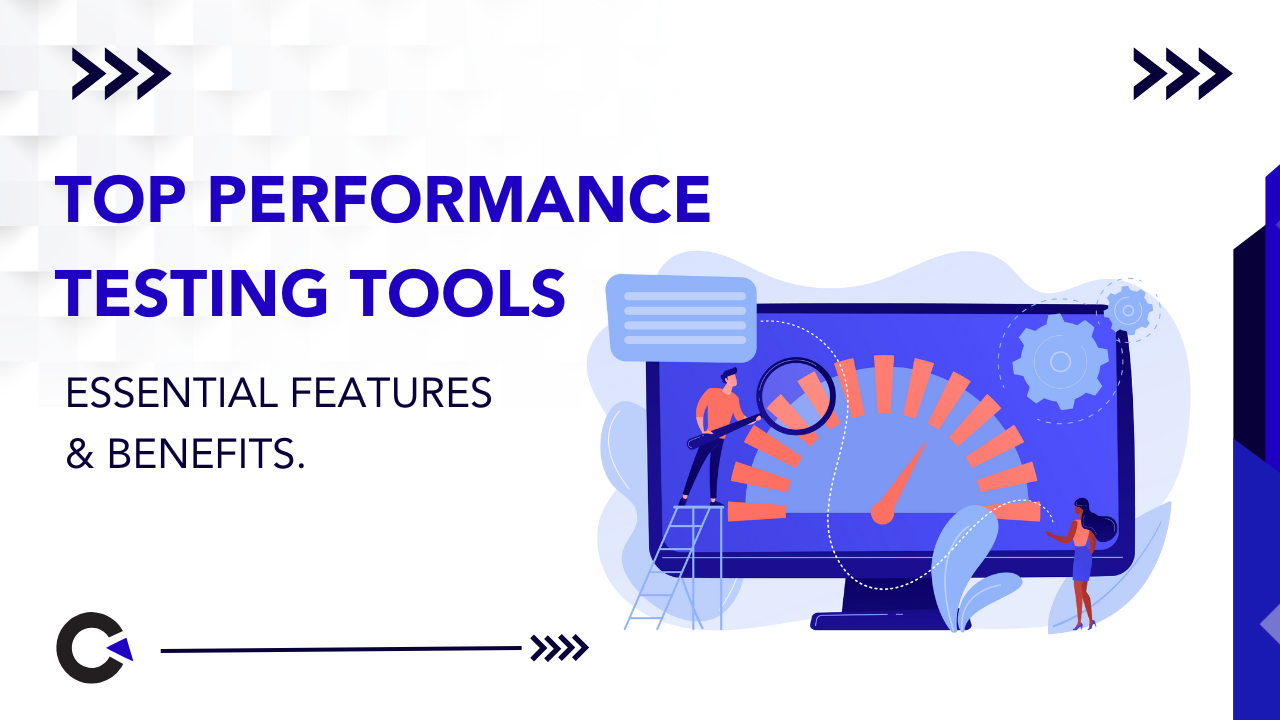
by admin | Jan 15, 2020 | QA Outsourcing, Fixed, Blog |
Do you know how to maximize your software testing efforts? Are you accurately evaluating the results of your software testing? You should hire an independent software testing company to help you achieve your business goals. Since they are in the software testing industry, these companies will have the necessary expertise and experience to deliver a flawless software product. While deciding which firm to outsource your software testing to keep in mind the following tips:
Decide whether you need a team of testers or a specialist QA team for a one time project or for continuously testing all your projects. Depending on this, you will be able to finalize the duration you want to hire the software testing services company. So, is it better to consult testers separately or hire a complete team to devise your business strategy? If you can answer this question, you will be on the road to success by making the right decision for your company.
To decide if single-time service or a long-term contract would work better for your software testing requirements, list down the following factors:
Size – You should first determine the number of people you will need in your QA team and then hire a testing team from a best QA company.
Location – Think about geographic location, which city or country do you want your team to be located in is an essential factor and will help you shortlist options.
Price – The location impacts the costs that leading QA companies charge. So set a budget based on what you are willing to spend wrt software testing.
Culture – Whichever software testing company you eventually hire, ensure their values are aligned with yours.
Communication – Check their communication style and work ethics.
Does the QA testing company emulate your business values?
Always assess your competition and choose a software testing company based on their uniqueness and test their services before you decide which one of them will be best for checking your company’s software.
Verify the company before employing them by doing a thorough background check on their validations and also check with their prior clientele if possible to see if they will vouch for them. It will help you make an informed decision of whether you want to employ them for your software testing services.
You should also note that not all software testers work in the same way, so you should test that they are aware of the latest tools and technology. Their expertise should match with your software testing requirements.
Both testers and developers are needed on your project to ensure a perfect launch for your software product. While your developer needs to have significant proficiency in writing code as well as superior programming skills, your tester should be proficient in communication and have in-depth knowledge of the system being developed. Developers create prototypes, and testers check them until they function. Any bugs found are reported to the development team to be fixed. That’s why the right software testing company will be able to guide your product into shorter timelines and higher profit margins because errors are tackled immediately as they arise.
As one of the top software testing companies in the industry, Codoid can help you do the necessary research and join you as your software testing company.

by admin | Dec 12, 2019 | QA Outsourcing, Fixed, Blog |
Software development companies know that innovation will give them a competitive edge against competitors. To ensure a high quality of code, you should separate the development process from QA testing. A user-centric trend, along with customer-focused digital transformation initiatives, like DevOps, Agile, and Cloud technology, has transformed the way software Quality Assurance (QA) testing is done. Outsourcing initially cut costs, but now it is an efficient way to achieve business goals. A dedicated QA company can ensure that your software development process runs smoothly.

Here are some reasons to outsource to an experienced Software Testing services company like Codoid:
Domain expertise and business scaling
Bugs in your software application can lead to severe implications when critical data is shared. So, hire technical engineers to code new applications and add innovative features while you outsource QA testing. Domain experts verify your app for regulatory compliance and safety. A software testing partner will evaluate your software critically and enable you to push products into the market at the correct time and avoid data vulnerability and losses to revenue and reputation for your company.
Protect source code and engagement models
Develop an outsourcing plan by selecting effective engagement models by including business strategy and geographical location. An incremental style of outsourcing will allow you to negate risks by dividing work into smaller, manageable projects, while total outsourcing will involve multiple projects assigned to a service provider. Outsource your QA requirements and ensure that your intellectual property rights cannot be compromised. Don’t share source codes as the QA testing team will be analyzing the app only from an end-user perspective.
Configuration, change management, and objective analysis
A third-party QA services company maintains a comprehensive change and configuration management system that provides agility to the entire process. Having a Test Center of Excellence (TCoE) can improve quality, speed to market, and lower cost of ownership. DevOps approach in the QA team integrates the process of development and testing as a shared function, and it requires the right automation tools, resources, and expertise.
Strict deadlines and 360-degree quality assurance
The best QA companies can identify gaps in test processes, assess testing requirements, and implement positive changes at an affordable rate. They can help software development companies test a diversified product portfolio through unbiased testing. If bugs are found during the implementation vs. the production phase, it can cost less to fix and expedite processes to meet project deadlines. By outsourcing QA testing, you can concentrate on core competencies through Independent Verification & Validation (IV&V) and focus on the development process.
QA automation through the flexibility of resources
Advancements in technology have automated several parts of software testing, and companies that plan to outsource can leverage the benefits through a qualified team with hands-on experience in automated QA tools and techniques. Faster release cycles are possible, and you can reduce the deployment of resources and pay for what you need when you outsource QA testing.
Mitigation of risks and cost-effective
Testing is validated by a team of experts who conduct risk assessments across domains with state-of-the-art testing infrastructure to ensure your product’s performance and quality are high when deployed. Outsourced QA and software testing with maintenance comes at a fraction of the cost than when you hire a complete in-house team.

by admin | Dec 17, 2019 | QA Outsourcing, Fixed, Blog |
Achieving product quality throughout your company DNA to meet targets is the biggest challenge for quality assurance (QA) teams across the IT industry. Despite your team being outsourced or in-house, management, development, and QA together will build an efficient software development lifecycle (SDLC) process through combined experience and efforts.
During pre-planning As part of the pre-planning, they help define testable use case scenarios. They actively participate in the project to assess risk analysis quality and implement testing strategies, thus minimizing risks later. The time needed to debug and check failures is lesser and results in better ROI overall.
During sprint planningMobile App Testing Being a leading QA Company, we write blogs on all prominent software testing topics and tools using our real-world experience. So stay sharp by subscribing to our Newsletter QA Outsourcing teams Identify functional, non-functional, and exploratory testing of the latest features during sprint runs that create real-time reports. They should work closely with the development team and facilitate communication for the team inside and out.
During the sprint Driven by the QA team, new test creation, and TDD can save time, and if they prepare regression tests during sprints, automated tests will be ready faster to speed up the deployment phase. With CI/CD environment, it can be almost six times faster. QA teams split tasks into tests and user case scenarios to help developers concentrate on core functionalities in task management.
Let’s discuss some best practices for the QA teams to achieve their set goals:
- Know your stakeholders and their effect on quality within their role and provide actionable data to them.
- Participate in roadmap planning and cross-functional processes so that code meets user expectations and is testable.
- Have daily cross-department meetings with all teams to decide solutions for defects or user escalations.
- Analyze issues and feed them through the product roadmap and scrum plan to tackle problems that affect quality.
- Advocate for quality through zero tolerance for delays, transparent policies, and definitions wrt the usability of the product.
- Use the right tooling and infrastructure to deliver repeatable and reliable results for timely decision-making.
- Focus on quality and set up a defects committee to decide which bugs need testing before each sprint is released.
- Learn from escaped defects and improve future releases by conducting risk-based testing and creating automatic tests to check user flow.
- Improve visibility, information flow, and collaboration into your activities to create trust within agile teams.
- Mark features as alpha, beta, or early access to set expectations for users and get feedback from them.
- Improve processes and decide upon appropriate testing strategies by stating when, how, and to what extent.
- Search for unanswered questions and test new features on separate integration branches to allow isolation of new code and analyze it in the production environment.
- Bring a different perspective as they are mainly impersonating different user type interactions.
- Perform continuous exploratory testing to check API endpoints outside the GUI to identify potential threats and ensure they don’t result in unexpected regressions.
- Perform a UX review and get rid of any inconsistency.
- They conduct competitor analysis from fact sheets, web seminars, demos, media news, and blog posts, with a SWOT analysis.
- Look for tooling opportunities and think of risks that could cause probable disaster scenarios and help the development team to avoid such bugs.
- Write E2E (End-to-End) tests that mimic user behavior and automate the regression testing process.
- Spend time with the customer support team.
Having an experienced software testing consulting company, like Codoid, can add significant value to your project and ensure the reliability of your application. So don’t hesitate to hire a good QA Outsourcing team immediately.

by admin | Oct 16, 2019 | QA Outsourcing, Fixed, Blog |
As the app grows bigger and bigger, more QA resources are needed at your disposal. Nevertheless, it’s not fixing the quality-related issues. The crux of the issue is not lack of resources, you have the right budget and resources in hand. The issue is the lack of strategy in implementing the right QA operations to scale” Many times outsourcing too results in subpar performance. Spending exorbitant money, resources, and effort on a quality issue without adopting the right strategy will have adverse effects on the outcome. Read on to the blog article to avoid making such a costly mistake and find out our recommendations to improve your QA operations.

Take ownership of QA internally
Having more QA professionals at disposal won’t reap anticipated benefits, on the contrary, assigning ownership to someone internally will reap great benefits once your QA process is implemented. Ideally, even after outsourcing every other function of your QA services, you need someone hands-on to formulate a rock-solid strategy and to do the overall software testing efficiently.
Consolidate your QA & Development Resources
Always on the lookout for opportunities to bring your QA team in synchronization with the development process and development team for a better outcome. “The more you bring your QA team involved into the development process and have them share their timely feedback the quicker you can reiterate and accustom. Including testers in multiple stages of a product lifecycle or the SDLC means that you get all vital feedback happening much faster.
Frame QA as a Prerogative
Make QA both a prerogative and priority in your company. It might sound bizarre but companies who look at QA as just a support team that comes at the end of the development process to spot what is broken won’t achieve the desired outcome. Try thinking of ways to optimize how QA can be made a revenue-generating team rather than a cost center.
Adopt Early Integration Techniques
Getting your QA team involved earlier in the development process implies that you have a fair chance of your product being released on time. In general, research works have factual evidence that companies that have their QA teamwork as early in the design or ideation stage release products with more tenacity.
Automate wherever appropriate
Assess procedures to automate tests that are repetitive and can be reviewed by automated methods. This doesn’t literally mean that you have to be extravagant on your automation budget, because it’s a herculean task that results in spending so much time building scripts, tests and then continuously monitoring them. Invest in test automation engineering resources and servers to handle automation diligently.
Adopt a scalable business strategy
Mobilizing testers through crowdsourcing technique to build your testing capabilities is not a cumbersome task the same can be done on a case to case basis. On the contrary, if you have efficient software testing resources at your disposal to carry out functional exploratory testing and execute test cases without having to hire new employees then you are already into the game. Your next priority will be to think of forming a scalable business strategy that will immensely benefit your end-users.
Conclusion:
Codoid, one of the leading QA companies in the world with years of solid expertise has the distinction of offering efficacious QA services to its clients spanning across the globe in the QA space. Our team of ardent QA engineers is deft at handling QA projects of all sizes. Connect with us for all your QA-related services.

by admin | Oct 7, 2019 | QA Outsourcing, Fixed, Blog |
QA Managers role often in an agile environment is perplexing: How do you comprehend your role as a QA Manager, in a hardcore agile environment setup, it has never been defined. QA management professionals always have a distinction of working in traditional waterfall backdrops with so much ease. Comprehending what is actually expected out of them as soon as they move into an agile environment is key to every QA manager’s accomplishments. Blueprint is as follows
In Agile environments, quality is governed by development team managers and development testers also known as (SDETs) within the same team and not by outsiders. Their reason is: the team is solely responsible for and its performance measured by the quality of the code, delivering a high-quality code becomes a topmost priority. Quality has become an inevitable part of the team’s agenda during every team’s planning, development, and status meetings. Code quality endowed by quantifiable results becomes a target for the entire team. The outcome is better code.
But the flip side of an agile transformation is an end-to-end process that takes a huge amount of time and effort before quality becomes an innate trait of the whole team. Development testers and developers tend to focus on the technical aspects such as test automation and tools. They disengage themselves from functional aspects, such as the business aspects behind the code, integration, and customer engagement activities.

Unlike software development QA is a distinctly different profession. QA professionals must possess the proper technical background and keep themselves updated with the cutting edge tools, trends, technologies, and best practices —something which makes them a way out of league of developers.
Set up a level playing ground
QA managers should offer agile teams a great sense of independence and responsibility to manage themselves, the organization, on the whole, should work as a comprehensible unit. The QA Manager sets a few basic ground rules, such as what testing tools to be used, methodologies to be adopted, defect statuses defining methodology, build categorization, and so on. Every QA manager, should work in tandem with the R&D managers in defining QA standards to be used, and determining how methods to be introduced to the teams, how training to be imparted to them, and how to monitor progress and quality throughout the development process. These in turn will become the standard operating procedure the R&D managers use to implement QA processes within their development teams.
Building capabilities
Each team within the organization have their own areas of expertise. One team may work on the user interface (UI) part, while the other focuses on the back-end. Different fields of development require a different set of knowledge, as do manual and automation testing Services. Test automation may be very different, depending on whether you’re working on the user interface, REST API, or CSS implementation. Your role as QA manager is to build the team effectively, with the right proportion of development testers and QA architects, as well as to define their roles and responsibilities and how those roles work together in conjunction. QA managers should also ensure that development testers are properly equipped to meet their team’s development standards.
Determine quality metrics
Before a QA Manager evaluates the quality of deliveries, he/she must establish the metrics to measure it. As a QA manager, you should help the development teams ascertain quality metrics. For instance, defects classification, measure efficiency, calculate the regression ratio, causes of regression, initial quality assessment. A QA manager takes a comprehensive look at the quality by examining the trends in metrics across all teams within the organization. This not only gives a view of the quality of the organization’s code as a whole but also helps identify teams that aren’t working effectively.
There are so many reasons for a team’s sub-par performance. This includes not following testing methodologies correctly, and initial code quality may not be on par with the defined benchmark, resulting in a high number of defects. In addition to this, insufficient code coverage in automated tests will lead to regression defects. Whatever the reason, it’s the role of a QA manager to identify issues, delicately narrow down into the team’s work practices, and ensure that their performance remains on par with the rest of the organization.
Holistic approach
In most organizations, the development teams develop, test, and deliver user stories within their own domains, it is left to the QA architects to perform cross-functional testing to make sure that everything works well together. They test interactions between different modules in a variety of environments and configurations to ensure the system works end to end, without any integration, security, performance, or other issues. One role as QA manager is to reflect on overall system quality. In finding problems at the system level, acting as a bridge between the development testers, QA architects, and development teams. Since he receives input from all these teams and cross-system activities, he is uniquely positioned to have a holistic approach, reflect on the overall status of application quality, and identify bottlenecks.
Assessing the ROI of test automation
Test automation is necessary to meet higher demands for shorter schedules and bug-free releases. However, it’s critical that you continue to assess each of your investments in automation tools and processes.Trends like automation, continuous testing, and DevOps continue to raise the bar. With the potential for more flexibility, speed, and complexity, Maximizing speed and quality—while minimizing cost—is both a goal and a challenge.
QA managers must understand that test automation is a toolset. As with any other tool, test automation increases productivity and process efficiency. This opens up the possibility for a series of creative solutions to all the predicaments. Most importantly, keep the following in mind: the team needs an experienced QA professional to craft an automation strategy. A good strategy depends on solid leadership ability. The leader must prioritize the implementation across the entire functional spectrum
Diligence in Resource allocation
QA Manager should be in a position to balance internal testing demands of the team. If there is a sudden surge in extra test cycles, the person who handles the development may deploy additional software testers from within the team. In an agile team, all members should have some basic level of understanding and capability to run tests. In reality, however, this is next to impossible.
In those instances, the QA manager moves developers or development testers between teams to address an immediate need for extra testing. This approach is known as “swarming.” This often happens during the feature freeze phase of programming, during which the team conducts intensive regression testing to stabilize the product. At that point, above all, a QA manager’s role in an agile organization should be to have a shared vision and set strategy. He should stay abreast of new developments in the QA domain, assess new tools, and learn new methods. He must implement QA processes within the group and constantly improve on those by defining activities, setting priorities, and balancing resources at the group level. In this way, all teams in your group can work together to consistently produce the highest-quality code
Conclusion
We @ Codoid follow a pragmatic approach towards the QA process and ensure that our QA deliverables invariably far-outstrip the industry set the benchmark. Connect with our eminent team of QA engineers for all your QA service needs.

by admin | Aug 19, 2019 | QA Outsourcing, Fixed, Blog |
Developing various QA strategies is a pre-requisite for the best QA companies, with these strategies and processes remaining focused on delivering value to the customer. However, QA outsourcing companies, leading in this realm, manage to scale such strategies in response to expanding volumes of testing assignments, higher levels of quality commitments demanded by clients, and to compete with emerging providers of software testing services. There are several techniques that such top companies follow:

Acknowledge Complexity
Engineers working at software testing companies must remain aware of the forces that mold the shape and design of QA systems and processes. These include the specific demands of a particular client, emerging trends in software testing services, and the perspectives and interests of end-users of a software product. In response, engineers and managers may custom-develop QA testing processes that support the goals and objectives of different projects.
Limits of In-House Teams
QA testing strategies that depend on hiring a host of in-house testing professionals invariably boost the costs of business. Training costs, staff salaries, various tools and technologies, real estate, and office consumables represent some of these costs, and must be managed (and balanced) by the revenues generated through software testing services. However, certain limitations invariably appear when such organizations seek to scale their QA testing offerings, and it would make more business sense to hire the services of a top rated QA outsourcing company with years of diverse industry experience.
Outsourcing QA Testing
Offshore teams with specific experience in terms of designing and navigating software testing services represent the best approach to scaling QA testing assignments. When organizations consider enrolling the services of a QA outsourcing company, they would be able to work with a large customer based spread across time zones. This technique enables organizations to leverage the expertise and insights of veterans and experts employed by software testing vendors.

Latest Tools and Technologies
A software development organization must select the latest tools and technology to power their testing frameworks. In this context, the services of an outsourced QA Company enable the organization, seeking to develop an app or software, to evaluate the testing requirements of a project, refine existing resources, engage with upcoming testing tools and technologies, and drive swift turnaround times.
Lower Costs from Outsourcing
The best QA companies offer their clients lower costs in terms of executing and delivering QA testing services, and such providers also ensure optimum product quality, achieved through modern QA testing systems and processes. Additionally, the choice to outsource software testing services entails lower expenditure in terms of staffing expenses and overhead costs for the client organization. The savings from such an exercise enables the software company to use the money to scale and or employ better and contemporary resources.
Quality Ownership
The providers of software testing services are better placed to provide a guarantee of higher quality QA testing services since they would ‘own’ the execution and delivery of such services. Additionally, since such ownership is driven by responsible testing and coding practices offered by the outsourced vendor, businesses would be free from the worries associated with the work, effort, and issues of such testing. Typically, top QA Companies encourage testing engineers to communicate with developers, thereby ensuring that clients are able to effectively scale their QA testing services.
Outsourcing Allows Developers More Time to Focus
Business collaborations with a software testing company enable software developers to focus on the functionalities of the core product. Developers have more time and thus able to invest energies into innovation, which leads to the improvement of quality and performance of the software product. The decision to outsource QA testing, guarantees that the experts of the QA Company will conduct product testing and deliver detailed test reports.
In Conclusion
Scaling QA testing of your software company is necessary, but may not be easy to do without professional help. Software development organizations that wish to speedily improve the quality of their product, reduce operational expenses, and drive product delivery in line with client expectations, need to look at creative options. Connect with us to drive growth in terms of organizational expansion and achieve the ability to scale your QA testing systems and processes to ensure sustainable growth.


































